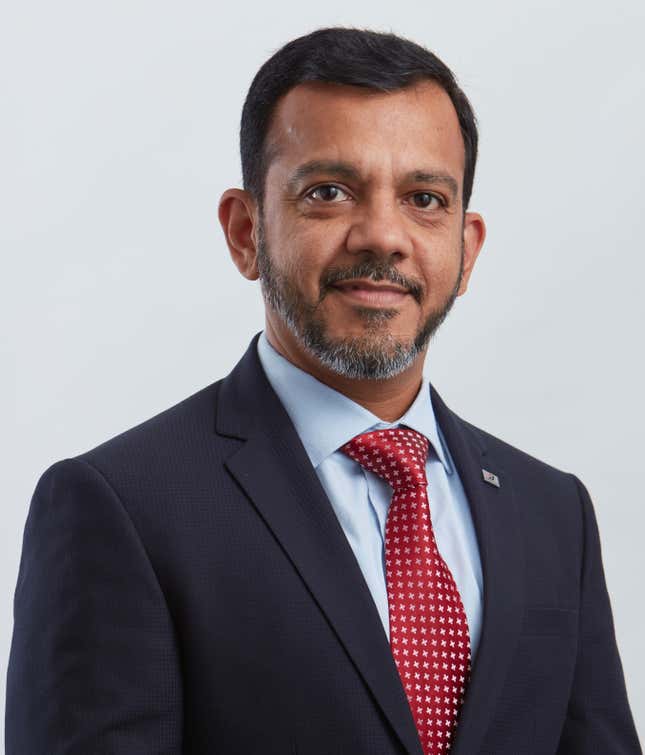Digital technology is transforming Bridgestone India from a mere tyre maker to a provider of mobility solutions.
The firm, which opened shop in the country in 1996, is now focussing on offering technology-based innovative products. For instance, it has developed an IoT-based “smart strain sensor” that allows its vehicle managers to remotely monitor a tyre’s air pressure, load, and wear and tear in real-time. This helps in averting accidents and other mishaps.
“The tyre industry is seeing new business models, which entails combining product and service offerings to create value-added solutions,” said Parag Satpute, managing director, Bridgestone India. The firm is a wholly-owned arm of Japan’s Bridgestone Corporation, the world’s largest tyre and rubber manufacturer.
The Indian entity is leveraging its parent’s R&D expertise to roll out intelligent products like tyres with low rolling resistance that can enhance a vehicle’s fuel efficiency. “Today, manufacturers have a lot of data regarding the usage of tyres and their performance. Companies need to invest in data to leverage this information to build smarter products,” says Satpute.
In a conversation with Quartz, he talks about the importance of digital technology and analytics in business. He also underlines how Bridgestone India is focussed on hiring people with the ability to learn continuously.
Edited excerpts:
What is that one job that would be the most crucial to Bridgestone India in the future?
Enabled by digital technology, new opportunities are emerging in India’s automotive and tyre business. This includes online selling and tyres as a service, which allows vehicle fleet owners to pay for the tyre based on usage. At the same time, our core business of manufacturing tyres continues to grow. Hence, rather than a specific quality, we are looking for people with a mindset to take risks, and think logically. Especially within our front-end employees and management, the ability to think beyond the obvious and combine the knowledge of our core business with new-age digital technology will be crucial.
What are the qualities you look for when you hire?
The most important quality I look for in new team members is “growth mindset.” While the experience and track record of a candidate is important, I believe in focussing more on a candidate’s attitude and ambition. Given that the world and our industry is rapidly transforming, it is difficult to predict the exact nature of challenges we will face. If an individual can adapt and believes in continuous learning, her chances to succeed even in this VUCA (volatile, uncertain, complex and ambiguous) world are high. I enjoy working with people who constantly strive to develop themselves and are not afraid of going out of their comfort zones.
If you were interviewing a fresh graduate right now, what is the one question you will definitely ask?

I want to understand from all candidates “why” they would like to join Bridgestone India. I believe the partnership between an individual and corporation can be mutually beneficial when the values and broad goals of the two are aligned. For example, if a fresh graduate is looking for a steady and well-defined career path, our industry might not be the best fit currently given the huge transformation it is going through. On the other hand, for someone who is excited by transformation and has a pioneering spirit, there are multiple opportunities in the industry.
What do you want that candidate to ask you?
I have always been impressed by candidates who ask questions beyond the obvious ones such as “career path” and “business strategy.” It’s refreshing to meet a candidate who has done some background research on our philosophy, values and wants to have an informed discussion to understand how these are embodied in our day-to-day work environment.
Do you feel that academia in India is doing enough to ensure that graduates are employable?
I believe there is an opportunity to increase academia-industry collaboration in India. The curriculum is quite dated, especially in context of the rapid changes transforming the industry. The onus lies both with academia and the industry. It is good to see that many academic institutions are attempting to create forums for such interactions. At a personal level, I do try to contribute by interacting regularly with students at university events by sharing the evolving expectations of industry from new graduates.
How do you keep pace with the changing technology landscape and evolving customer demands?
It’s a great advantage to be a part of a global group such as Bridgestone. We are at the forefront of new technological developments in the automotive and logistics industry through our digital initiatives and the recent acquisition of Tom Tom Telematics’ FMS (fleet management system). We look at ourselves not just as a company selling tyres but as an organisation that is in the business of providing mobility solutions. It is this mindset that helps us keep up with the changing technology landscape.
Being a part of the Bridgestone group, we get access to colleagues who are working in more advanced markets such as Europe and benefit from their expertise. We can leverage this knowledge to support the product demands of Indian customers.
Why has data suddenly become centerstage? Also, is analytics being effectively implemented?
The recent advances in sensor technology have enabled the collection of a vast amount of data on tyre pressure and temperature, distance travelled, wear and tear of tyres, etc. Harnessing this data can enable more efficient use of not just the tyres, but also fuel. All this is enabled by access to accurate data and the ability to analyse it and convert it into intelligence.
In Jobs of the Future series, Quartz writers speak to CXOs at some of India’s biggest companies and ask them about that one job that will be critical to their companies in the coming years.
